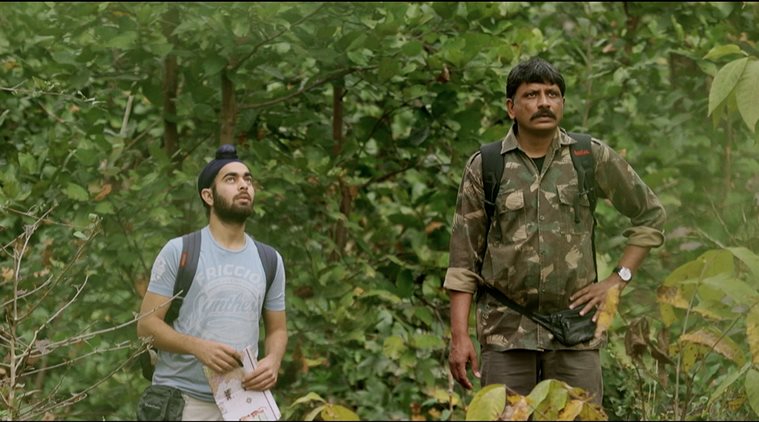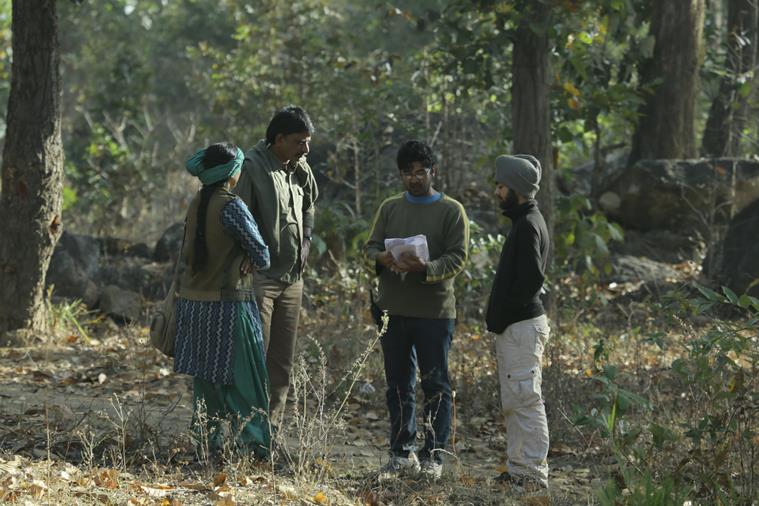
The Indian Express
Zoya brings out the emotional side of a wildlife conservationist working in the heart of India
It was in a trip as part of his college’s nature club in 2007 when filmmaker Sahirr Sethhi, 32, first visited Kanha and Bandhavgarh tiger reserves. “Not only did I learn more about tiger conservation, but also those who dedicate their lives to save the tiger,” he says.
by Surbhi GuptaThe story of Zoya is simple, probably too simple, as it leaves you wanting for more. At the heart of it is a wildlife conservationist, Dr Rajeev Kapoor, in search of a tigress named Zoya, who he had rescued and bred and is now missing. Maybe the poachers found her, who knows? Every day, Kapoor takes on the lonely journey into the jungles of Kanha Tiger Reserve in Madhya Pradesh, in search for pug marks, laying camera traps. One day an enthusiastic intern Armaan joins the expedition, what happens next makes the rest of the story. It is not common to see a feature film on a wildlife conservationist and one that explores his equation with a field intern. Usually, we have documentaries and travelogues to do that job, hence Zoya is a welcome change.
It was in a trip as part of his college’s nature club in 2007 when filmmaker Sahirr Sethhi, 32, first visited Kanha and Bandhavgarh tiger reserves. “Not only did I learn more about tiger conservation, but also those who dedicate their lives to save the tiger,” he says, adding, “A conservationist operates from a place of selflessness and immense love for nature. They spend time away from their families, becoming one with the wild, following a purpose that they hold sacred. All these realisations evoked a great sense of empathy within him and he began to wonder what would a conservationist do if a tiger they had saved went missing?

A filmmaker who shuttles between Mumbai and Los Angeles, and is a graduate of UCLA and FTII, Sethhi made the film after winning a $30,000 production grant from the Alfred P Sloan Foundation. The film later won a Student Emmy in the Drama category, and had its world premiere at the 2016 Palm Springs International ShortFest. After screening in various festivals in the US, it premiered in India last year, and can now be viewed on the streaming service MUBI.
The relationship between Armaan and Kapoor was an interesting one to explore for the filmmaker, as the intern represents the “innocence the stoical expert has lost over the years”. “Armaan is new to the field of conservation – eager to please and learn. Whereas Kapoor has gotten his routine down to a science, he is so consumed by his pursuit that nothing else matters. They are united in their goals, but have entirely different attitudes and approaches towards it,” says Sethhi. The 27-minute film stars Rajesh Tailang, from Delhi Crime and Selection Day, and Manjot Singh, who gave us a memorable performance in Oye Lucky Lucky Oye.

Sethhi thought of approaching Tailang in early 2015 after watching his film Siddharth. “He delivered a deeply empathetic and nuanced performance, while maintaining an evocative screen presence. He is a unique actor that can layer characters with the duality of being vulnerable and stoical at the same time,” he says. As for Manjot, he had loved his performances in Oye Lucky and Udaan, so he wrote Armaan’s character, keeping Singh in mind. “He is an extremely sincere and lively performer, who observes life with a sense of wonder and curiosity, which is what the character needed,” he says.
After scouting for locations with his cinematographer and producer in Ranthambore, Kanha and Bandhavgarh, Sethhi returned to the forests with the actors and a small crew of six people. “Together we were out in the wild, embracing guerrilla filmmaking to the T. Nothing glamorous – no vanity vans, no big lights, no extras, no dollies and no generators. There were days we would hike miles into the jungles of Kanha to film in lush green nooks with glorious sunrises and sunsets in the backdrop,” he says.